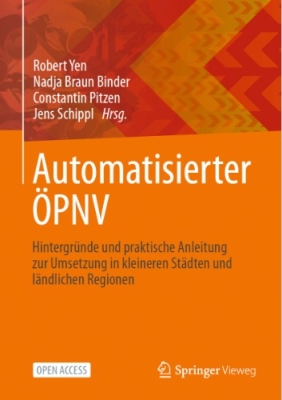What opportunities does automated public transport open up for smaller towns in particular? This story uses the example of a small German town to vividly illustrate this.
The story "Future of Mobility" tells us that anthropogenic climate change is the main driver for a change in mobility. Regardless of which technologies are available to us in the future, we will replan and redesign our cities so that we live in multifunctional neighbourhoods where we can meet essential daily needs without having to travel long distances. The urban spatial structure in many cities will be very different from what it is today. When we talk about the integration of automated public transport in urban space, we should not start from the existing structures. Rather, we should think about the extent to which automated public transport could be an instrument in the transformation of our cities and regions towards climate neutrality.
Especially in the outskirts of big cities or in small towns in rural areas, it is too expensive today to build up an attractive public transport system. Attractiveness of public transport is mainly due to high frequency (every 3 to 10 minutes) and spatial availability (I do not have to go far to use public transport). However, these two factors drive up the personnel costs for public transport massively. Automated people movers, small buses for 6 to 9 people, could make it possible to offer public transport that people also like to use.
Let's take a small town like Lindau at Lake Constance as an example. Lindau has around 25,000 inhabitants. The city centre with a large stock of old buildings is located on an island and attracts many tourists, especially in the summer months. 34% of inland traffic in Lindau is performed by car. The figure for origin/destination traffic is 68%. For journeys of 0-2 km, private motorised transport accounts for 29% and public transport for only 1%. For journeys of between 2 and 5 km, 50% of citizens use cars and only 6% use public transport, and for journeys of 5-10 km, 68% use private motorised transport and 11% public transport. The most common reason (35% agree and 15% partly agree) for using the car was "shopping". The second most common reason (30% agree and 12% partly agree) is "convenience".
People in Lindau primarily use the car for shopping and because it is convenient, even for very short distances. On the other hand, public transport is hardly used at all for short distances. If people in Lindau do not travel by car, they cycle or walk (approx. 50% of journeys). With a further increase in active mobility (cycling, walking), the strategy must be to increase the share of private transport by means of automated public transport and delivery services by means of cargo bicycles or self-driving small trolley containers. When I go shopping in Lindau, I can walk, cycle or take the bus that passes by every few minutes, and when I return home to pick up my shopping, it will be delivered to my door.
For this to happen, however, local administration must also have the courage to declare the city centre a car-free zone, to reduce areas currently reserved for road traffic and instead reserve lanes for automated public transport, and to open up a dense network of wide bicycle lanes for delivery traffic. It is also conceivable that street networks in residential neighbourhoods could be designed as encounter zones. From a municipal policy point of view, the purpose of automated driving is to create the framework conditions for sustainable mobility for citizens at reasonable costs and thus to significantly enable a sustainable lifestyle.
PDF | Integration des automatisierten ÖPNV in den städtischen Raum
PDF | Integration of automated public transport in the urban space






